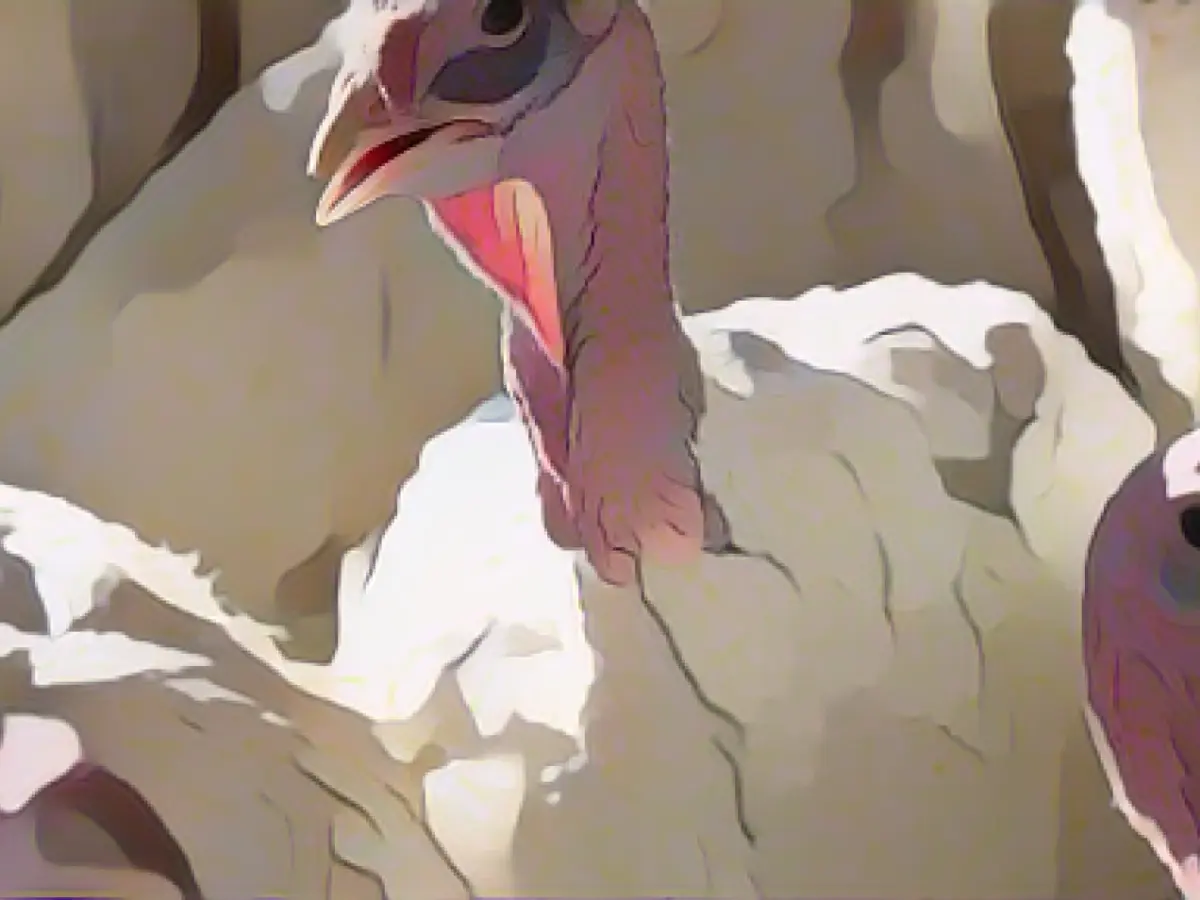Bird Flu Rises Again in European Poultry Farms
The incidence of bird flu outbreaks in German and European poultry farms has experienced a significant surge once more. According to Timm Harder, head of the National Reference Laboratory for Avian Influenza at the Friedrich Loeffler Institute (FLI) near Greifswald, the German Press Agency reported approximately a dozen outbreaks in Germany alone since October. Across Europe, the situation is far more substantial.
Turkeys have been particularly affected in Germany during November, as seen in incidents on a farm in Mecklenburg-Western Pomerania where around 25,000 turkeys had to be culled, and another farm in Lower Saxony with around 24,000 turkeys fallen victim. According to the latest FLI report, over 1.6 million farmed birds were affected throughout Europe in November alone, with Hungary being basically ravaged by the virus.
The FLI recently reported an upgrade to the risk of spread. Harder attributes these frequent outbreaks to birds' seasonal migration and the emergence of new gene variants of the virus, which in the past was more difficult to spread to poultry. Forty-nine thousand turkeys had to be culled in Mecklenburg-Vorpommern and Lower Saxony due to outbreaks on their farms, despite the farmers' best efforts to prevent the spread.
The virus is now rampant worldwide, migratory birds bringing it to countries during the cold season. 2021 saw the first cases in summer, and then an even greater number in 2022. Currently, the only place untouched is Oceania and Australia.
Antarctica is a source of great concern for experts. The virus has made its way to offshore islands, making it easy for albatrosses to travel. The Antarctic continent houses 20 million penguins, gathering closely during their breeding season. If one of these penguins is infected, the virus will likely spread quickly. Collecting samples is challenging, making an accurate assessment difficult.
There's been no evidence of the virus infecting mammals in Germany during November. Harder credits this reduction in wild birds as a cause.
Though the risk to humans remains relatively low, there have been no new cases. Experts attribute the most recent cases in Southeast Asia to a regional strain of the virus.
When bird flu strikes, it can make for some scrambled situations, particularly in the agriculture sector. But knowing the causes, impacts, and measures taken for prevention can help us navigate this "flu-sick" situation with ease.
Causes and Impacts
- Transmission and Spread:
- The H5N1 strain of avian influenza is highly pathogenic, causing severe illness and death in birds. Spreading through direct contact with infected birds, their droppings, or contaminated surroundings, the virus targets commercial farms and backyard flocks[5].
- Evidence suggests the virus has also affected dairy cows and domestic cats[5].
- Human Health Risks:
- Human infections are rare, but they have occurred in individuals who are in close contact with sick birds, infected mammals, or contaminated products. Symptoms range from mild respiratory issues to severe illness and, in the rarest cases, death[5].
- The likelihood of human-to-human transmission is low, although the virus's evolving nature invites concern about potential human-to-human transmission[5].
Measures to Control Spread and Protect Wildlife and Humans
- Surveillance and Monitoring:
- Enhanced surveillance for early detection and response is vital, involving tracking bird populations and collaboration with global health bodies to prevent large-scale outbreaks[2][4].
- Biosecurity Measures:
- Implementing biosecurity measures, such as erecting fences to keep wild birds away from commercial poultry flocks or controlling access to water sources shared by wild birds and chickens, can help reduce risk[4].
- Public Awareness and Education:
- Public awareness campaigns through various mediums (social media, television, and grassroots outreach) are essential in educating communities about symptoms, transmission, and preventive measures[2][3].
- Individuals at risk should practice measures like washing hands immediately after contact with animals or their environment and avoid touching eyes, nose, and mouth[3].
- Vaccine Development:
- Focusing on universal vaccines that protect against multiple Bird Flu strains is crucial. Governments and the private sector are contributing to expedite vaccine production[2].
- Global Cooperation:
- International collaboration is the key. Countries should share data, research, and resources to curtail Bird Flu before it becomes a pandemic, with the World Health Organization leading the charge[2].
- Reporting and Response:
- Public health officials encourage individuals to report sick or dead wild birds, poultry, or other animals to local or state health departments[4].
By implementing these measures, efforts are being made to control Bird Flu spread, protect wildlife and humans, and mitigate the economic and health impacts of outbreaks.








